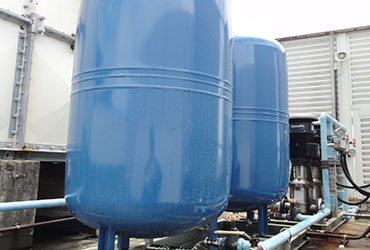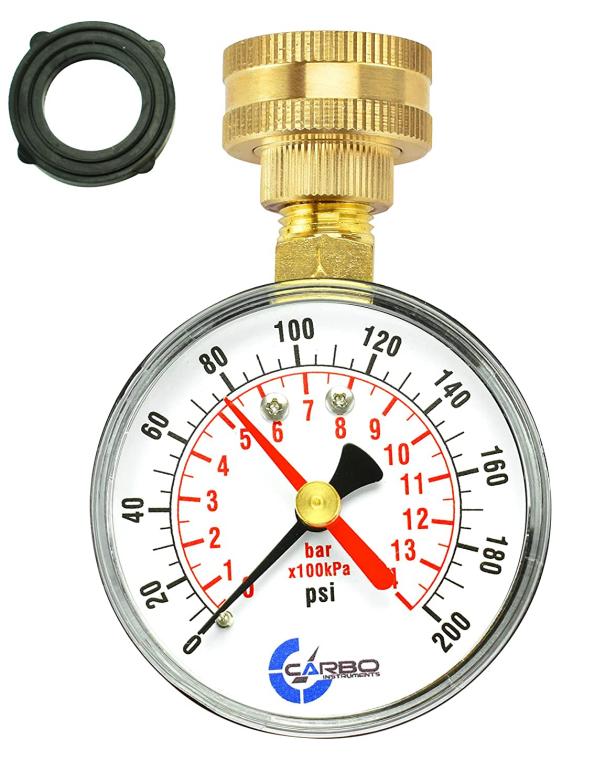Trusted Techniques for Managing Low Water Pressure in Your Home
Trusted Techniques for Managing Low Water Pressure in Your Home
Blog Article
The publisher is making a number of great pointers related to 9 Reasons for Low Water Pressure in Your House in general in this great article below.

Low water stress in your home can be a discouraging trouble, affecting whatever from bathing to cleaning meals. If you're experiencing weak water circulation, there are numerous feasible causes and solutions to discover. In this guide, we'll go over common factors for low water pressure and functional actions to deal with the issue properly.
Intro to Low Tide Stress
Low tide stress happens when the circulation of water from your faucets, showers, and other fixtures is weak than usual. This can make day-to-day jobs more challenging and much less reliable. Recognizing the root causes of low tide stress is vital to locating the appropriate option.
Typical Sources Of Low Tide Pressure
Faulty Pressure Regulators
Stress regulators are accountable for maintaining constant water pressure in your home. If they malfunction, it can lead to low tide pressure or irregular flow throughout your house.
Municipal Water Issues
Often, the problem exists outside your home. Municipal supply of water problems, such as main line leakages or upkeep job, can briefly decrease water pressure in your area.
Pipeline Obstructions
Gradually, pipes can become obstructed with mineral deposits, debris, or debris, limiting the flow of water. This is a typical issue in older homes with galvanized steel pipes.
Rust
Deterioration within pipelines can result in leakages and lowered water pressure. Rust accumulation can constrict water flow, specifically in aging plumbing systems.
Just How to Detect Low Tide Stress
Checking Pipelines
Evaluate noticeable pipes for signs of leakages, deterioration, or obstructions. Take note of any uncommon noises, such as banging or rattling pipes, which might suggest problems within the plumbing system.
Consulting with a Plumber
If you're incapable to identify the cause of low tide pressure, take into consideration working with an expert plumber to perform a complete inspection. They can recognize underlying concerns and suggest proper solutions.
Examining Faucets and Fixtures
Beginning by testing the water stress at various faucets and fixtures throughout your home. If the issue is isolated to particular areas, it might indicate localized issues.
Do It Yourself Solutions to Repair Low Water Stress
Flushing Hot Water Heater
Debris build-up in the water heater can limit circulation and minimize efficiency. Flushing the storage tank regularly aids eliminate sediment and maintain optimum efficiency.
Examining Stress Regulatory Authority
Guarantee that the stress regulatory authority is operating properly. Changing or changing the regulator can aid recover proper water stress throughout your home.
Cleansing Aerators and Showerheads
Natural resources can gather in aerators and showerheads, reducing water flow. Remove and clean up these elements regularly to enhance water pressure.
Clearing Up Clogs in Water Lines
For minor clogs, attempt utilizing a plumbing snake or chemical drainpipe cleaner to clear obstructions in pipes. Be cautious when utilizing chemicals and adhere to safety guidelines.
When to Call a Specialist Plumber
If DIY initiatives fall short to settle the problem or if you suspect considerable plumbing troubles, it's ideal to seek aid from a licensed plumber. They have the proficiency and tools to address complex concerns safely and properly.
Preventive Measures to Keep Water Stress
Mounting a Stress Booster
Consider installing a pressure booster pump to enhance water stress in areas with regularly reduced circulation. This can be especially helpful for multi-story homes or homes with high-demand components.
Tracking Water Usage
Be mindful of water use habits and avoid ill-using the plumbing system. Straightforward changes, such as astonishing showers and laundry tons, can aid keep sufficient water stress.
Regular Maintenance
Arrange regular upkeep for your plumbing system to prevent concerns such as deterioration, leaks, and obstructions. Resolving small issues early can aid avoid even more considerable repair work later.
Verdict
Dealing with low tide pressure can be frustrating, yet determining the underlying reasons and implementing suitable options can bring back optimum circulation throughout your home. Whether it's cleaning aerators, evaluating pipelines, or speaking with a plumber, taking aggressive actions can make certain a constant supply of water for your day-to-day needs.
FOUR WAYS TO FIX LOW WATER PRESSURE NOW
Turning on a shower or faucet only to find the water comes out in a sad, slow drizzle is never a good feeling. How exactly are you supposed to wash a pan or take a quick shower when it takes 10 minutes just to rinse off a little soap? The good news is that when your water pressure is bad, there's always a cause: typically one that can be easily fixed. Here are some of the most common causes of low pressure and what you can do to fix the issue:
DEBRIS AND MINERAL DEPOSIT BUILDUPS
If you notice low water pressure from just one or two of the fixtures in your house, the problem likely has to do with debris buildup. Water is full of minerals and other debris, all of which can accumulate in your pipes and on your fixtures. This can cause a blockage that affects how much water flows through. To fix this, try filling a small plastic bag with white vinegar, and use a rubber band to hang it around your showerhead or faucet. Let the head of the fixture soak for a few hours, and the vinegar should loosen the deposits.
WATER LEAKS
Leaks are another common cause of low water pressure. If water is flowing out of your plumbing through a hole or crack before it can reach your fixture, the pressure coming out of the faucet or showerhead will be lower. A plumbing professional is your best bet for finding and repairing a leak in your water supply pipes.
Leaks are another common cause of low water pressure. If water is flowing out of your plumbing through a hole or crack before it can reach your fixture, the pressure coming out of the faucet or showerhead will be lower. A plumbing professional is your best bet for finding and repairing a leak in your water supply pipes.
A VALVE ISSUE
If you have low water pressure throughout your home, check your main shut-off valve to make sure it's completely open. You may also want to see if there's a pressure-reducing valve installed. If there is, have a plumber help you adjust the settings to get the pressure you're looking for.
OTHERS USING WATER
Believe it or not, your low water pressure could be caused by your neighbors. If you notice low pressure at certain times of day, it may be because you and the people living next to you have similar schedules - when everyone is showering at the same time, the pressure will be lower in every home. Low pressure throughout the neighborhood may also be caused by an issue with your municipal water supply. If that's the case, call the supplier to see if they're working on the issue.
https://www.rotorooter.com/blog/water-leaking/low-water-pressure-fixes/

We had been shown that write-up on 4 Ways to Troubleshoot Low Water Pressure through an acquaintance on a different blog. Sharing is caring. You just don't know, you will be helping someone out. Thank-you for your time spent reading it.
Or Book Technician Here Report this page